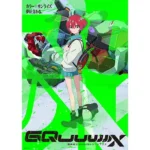South Korean battery giants like LG Energy Solution Ltd. are ramping up their graphite procurement efforts from China in light of imminent export controls on this critical electric vehicle battery ingredient set to take effect in December. LG Energy, in its recent earnings call, highlighted its intention to amass more graphite stocks before the controls set in. Similarly, Posco Future M Co., a renowned battery-electrode fabricator, has signaled its strategy to maintain “the proper levels of stockpiles” by the December deadline.
The pivot towards aggressive graphite stockpiling emerges from China’s announcement, in which its Ministry of Commerce unveiled plans to subject specific graphite types to export controls, motivated by national security imperatives. China’s dominating influence in the graphite realm is hard to overlook. They command about 60% of the globe’s natural graphite production capacity and a staggering 90% for its synthetic counterpart. The prospect of such controls, although not amounting to a comprehensive export ban, has set the EV manufacturing world abuzz, more so in the wake of China’s recent gallium and germanium export curbs, essentials for the semiconductor and telecommunications sectors.
In the shadows of these shifts, there are broader geopolitical dynamics at play. The tug-of-war between China and the US over pivotal materials for the high-tech and energy sectors is becoming evident. This comes on the heels of Washington’s augmented endeavors to restrict advanced semiconductor chips to China. Post the temporary Chinese curbs on gallium and germanium, their prices have catapulted by 20% to 30%. Steve Man from Bloomberg Intelligence projects a similar price trajectory for graphite.
Shu Jueting, a spokesperson for China’s Ministry of Commerce, clarified, “Exports that comply with requirements will be approved. It’s not targeted at any specific country, region, or sector,” emphasizing China’s dedication to upholding global supply chain stability.
Acknowledging their reliance on graphite imports, South Korea’s trade ministry has cast its net towards alternative avenues, notably African shores like Mozambique and Tanzania. Concurrently, there’s a buzz about advancing the inauguration of a domestic synthetic graphite facility, originally pinned for next year. Industry savants like Matthew Langsford of Terra Capital forecast that while a standstill in Chinese battery production is far-fetched, natural graphite products might encounter escalated administrative headwinds.
Graphite’s centrality in EV battery anodes is paramount. Be it natural graphite or its pricier synthetic sibling, any ripple in its supply chain can spell challenges. Sinolytics, a research firm, alludes to potential near-term deficits for non-Chinese anode producers but retains hope for sustained cell manufacturing and packaging activities.




